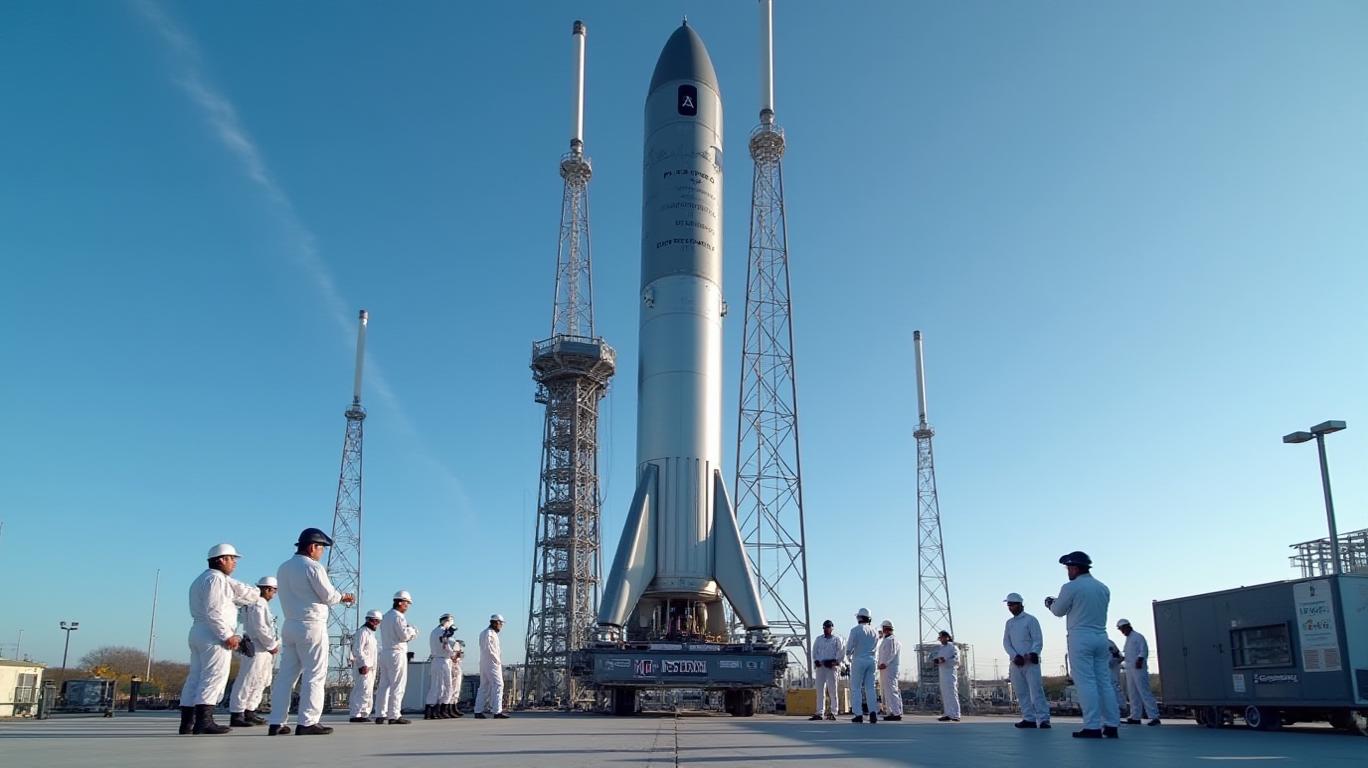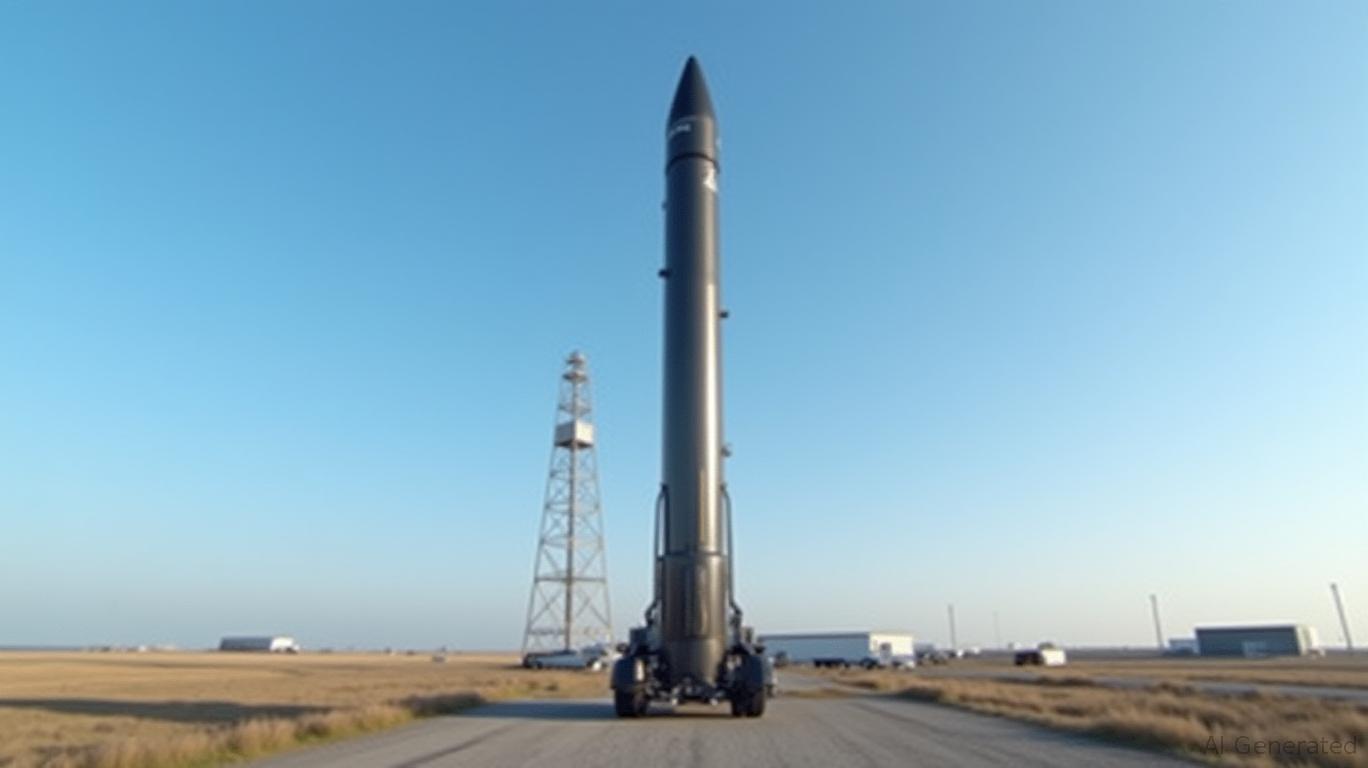Rocket Lab’s Q1 Results Highlight Growth Amid Expanding Losses: A Strategic Crossroads?
Rocket Lab (NASDAQ: RKLB) reported a quarter defined by contrasting trajectories: revenue surged to $122.57 million, a 32% year-over-year jump, while its net loss widened to $60.6 million. The company’s Q1 2025 results underscore its dual identity as a fast-growing space innovator and a firm still wrestling with the financial pressures of scaling operations. With forward-looking guidance pointing to further expansion, investors must weigh whether Rocket Lab’s strategic bets—on government contracts, next-gen launch vehicles, and acquisitions—will translate into sustainable profitability or deepen its financial challenges.

Revenue Growth vs. Expanding Losses: A Delicate Balance
Rocket Lab’s top-line momentum is undeniable. Product revenue hit $80.8 million, driven by its Electron rocket’s dominance as the world’s most frequent small orbital launcher, while service revenue rose to $41.8 million. The $122.57 million total placed it at the upper end of its guidance, outpacing Q1 2024’s $92.77 million. Yet, the net loss swelled by 37% compared to the prior-year quarter, reflecting soaring operating expenses and R&D investments.
The adjusted EBITDA loss narrowed slightly to $29.96 million from $21.67 million, a sign of margin improvements. However, the company’s Q2 guidance—projecting revenue between $130 million and $140 million—hints at continued growth but also warns of operational hurdles.
Ask Aime: "Rocket Lab's financial report shows revenue surge but net loss increases. What's the outlook for growth and profitability?"
Strategic Momentum: Government Contracts and New Markets
Rocket Lab’s strategic moves in Q1 were bold. Its Neutron rocket was selected for the U.S. Department of Defense’s $5.6 billion NSSL Phase 3 program, a critical milestone as it becomes the only publicly traded firm among five providers for national security launches. New contracts include a $5 million task order for capabilities assessment under NSSL and a 2026 Air Force experiment.
Meanwhile, the HASTE hypersonic test vehicle secured two major wins: inclusion in the U.S. Air Force’s $46 billion EWAAC contract and eligibility for the U.K.’s £1 billion HTCDF framework. These deals position Rocket Lab as a key player in hypersonic testing—a market with high growth potential but also significant technical and regulatory risks.
The $5 million acquisition of Mynaric, a European leader in laser communications, adds another layer to its space systems division. By integrating Mynaric’s technology, Rocket Lab aims to dominate satellite constellation support, a sector critical to expanding commercial and defense applications.
Operational Overhaul and Risks
Rocket Lab’s reorganization into a new holding company structure—Rocket Lab Corporation—aims to streamline governance and meet U.S. government security requirements. While this could reduce compliance risks, the delay of its shareholder meeting until after the June 1 reorganization deadline highlights execution challenges.
Ask Aime: Rocket Lab's surge in revenue amid financial challenges
Analysts remain cautious. Zacks Investment Research downgraded the stock to a “Sell” rating, citing a $0.12 EPS miss versus consensus expectations and a 12.5% YTD stock decline versus the S&P 500’s -4.3%.
Conclusion: A High-Stakes Gamble on Scale and Contracts
Rocket Lab’s Q1 results are a mixed bag. The revenue surge and strategic wins in government contracts signal strong demand for its launch and space systems capabilities. The narrowing adjusted EBITDA loss and Q2 guidance suggest operational improvements. However, the widening net loss and stock underperformance reveal the perils of scaling a capital-intensive business.
The company’s future hinges on three critical factors:
1. Government Contract Execution: Delivering on NSSL, EWAAC, and HTCDF programs will validate its ability to meet high-priority missions, which could justify its premium valuation.
2. Mynaric Integration: Success in merging Mynaric’s technology with Rocket Lab’s systems will expand its addressable market in satellite communications.
3. Margin Management: Achieving non-GAAP gross margins of 34-36% in Q2, as guided, is essential to proving profitability is within reach.
While Rocket Lab’s ambitions are audacious—positioning itself as a leader in both orbital launches and space systems—the path to profitability remains steep. Investors must decide whether the company’s strategic bets outweigh the risks of prolonged losses. For now, the stock’s struggles and Zacks’ “Sell” rating suggest skepticism persists. Rocket Lab must deliver on its guidance and contracts to turn skeptics into believers—or face continued pressure to justify its place in the space race.










